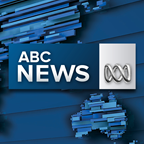
South-east Queensland drivers filling up their tanks this weekend will be paying the highest prices of any capital city in Australia.
Key points:
- Brisbane service stations sold fuel at a 15-month record high in April, despite international oil prices falling, RACQ data shows
- Fuel price cycles are monitored by the ACCC to ensure there is no collusion by companies
- RACQ tells motorists to use real-time fuel price apps and shop around
The latest RACQ data reveals Brisbane service stations were pumping fuel at a 15-month record high in April, despite a fall in the international oil price.
In recent weeks, prices at many petrol stations have hovered between $1.60 and $1.70 a litre, giving the big oil companies more than 45 cents profit for every litre pumped into a car.
RACQ spokeswoman Lauren Ritchie said the data showed what many people feared.
"Brisbane is the most expensive capital city in Australia when it comes to unleaded petrol prices," Ms Ritchie said.
"When we are seeing jumps of around 40 cents a litre from the bottom of the cycle to the top of the cycle that really hurts.
"Retailers are taking a very healthy margin on top of what we should be paying here."
ABC News: Lexy Hamilton-Smith
)'Dominance of the majors'
Independent fuel price analyst Geoff Trotter from FuelTrac called the practice an "obscene rip-off".
"The rise is unprecedented and the price and the margins that are available to oil companies operating in the Brisbane market are unprecedented.
"If we take the most common price in recent weeks of $169.9 cents per litre, the wholesale price is $1.25 so you are talking about 45 cents a litre retail margin, and that is in top of the 6 or 7 cents a litre wholesale margin that the oil companies also make.
ABC News: Lexy Hamilton-Smith
)"You can be talking about 51 to 52 cents a litre for an oil company-controlled site in Brisbane today," Mr Trotter said.
"We are very concerned that the dominance of these majors — BP, Caltex, Shell, Coles Express, Woolworths — it has meant that there is virtually no option for independents to have any significant impact on the average price.
For weeks, a handful of independents had bucked the trend keeping prices low and making as little as 5 cents a litre profit for unleaded fuel.
But Mr Trotter said by Friday many of those petrol retailers had also moved to the top price point after seeing their competitors raking in tens of thousands of dollars in profits.
ABC News: Lexy Hamilton-Smith
)This included the cheap cluster of independents in Graceville and Sherwood, where late on Thursday they had hiked the unleaded price up, dropped it back down again on Friday morning, only to push it up again later in the day.
Just one independent operator in nearby Rocklea kept prices low at $123.9 cents a litre.
ABC News: Lexy Hamilton-Smith
)'It is disgusting'
The up and down pricing remains frustrating for motorists.
On the Sunshine Coast, David McMeekin said he used a free fuel price app to hunt around for the best price.
"It should not be like that quite honestly," he said.
"These big national people companies are just hungry buggers — they really are — nobody likes them, but they just keep on doing it."
ABC News: Owen Jacques
)Sunshine Coast mother Nadine Johnston said she found a 30 cent per litre difference between two service stations — one in Nambour and the other in Maroochydore this week.
"It is disgusting — there should not be any reason why there is that big a difference — it is not right," she said.
ABC News: Owen Jacques
)ACCC monitors fuel price cycles
The high prices were to do with more people returning to work in the wake of COVID-19 restrictions easing, but also had a lot to do with fuel price cycles.
The cycles give drivers the chance to fill up on the cheapest fuel days and steer clear of the pump on the more expensive days.
ABC News: Owen Jacques
)It was a practice the Australian Competition and Consumer Commissioner (ACCC) has been monitoring to ensure there was no collusion.
For example, the ACCC website showed Perth had a seven-day cycle from low to top while Adelaide's cycle varied from six days to two weeks, making picking the bottom harder.
Brisbane's cycle went from 28 days in January to 38 days in March this year, showing the price was slow to rise, but even slower to come down again.
Supplied: ACCC
)'Don't throw your money away'
Mr Trotter said he would be loath to see Queensland legislation forcing a weekly cycle, preferring a price cap instead.
"If oil companies are prepared to sell fuel at some point in the cycle as low as 4 or 5 cents a litre and then they want 45 at the top, then a reasonable margin for them would be in the order of 15 cents a litre," he said.
"So that would give us a price of $1.40.
Ms Ritchie said the RACQ advised motorists to use real-time fuel price apps and shop around.
"Service stations that are keeping their prices lower, we need to support them — they are not making as much as the servos around the corner hiking their prices," Ms Ritchie said.
"You should be getting a really good deal — don't throw your money away."






 Add Category
Add Category